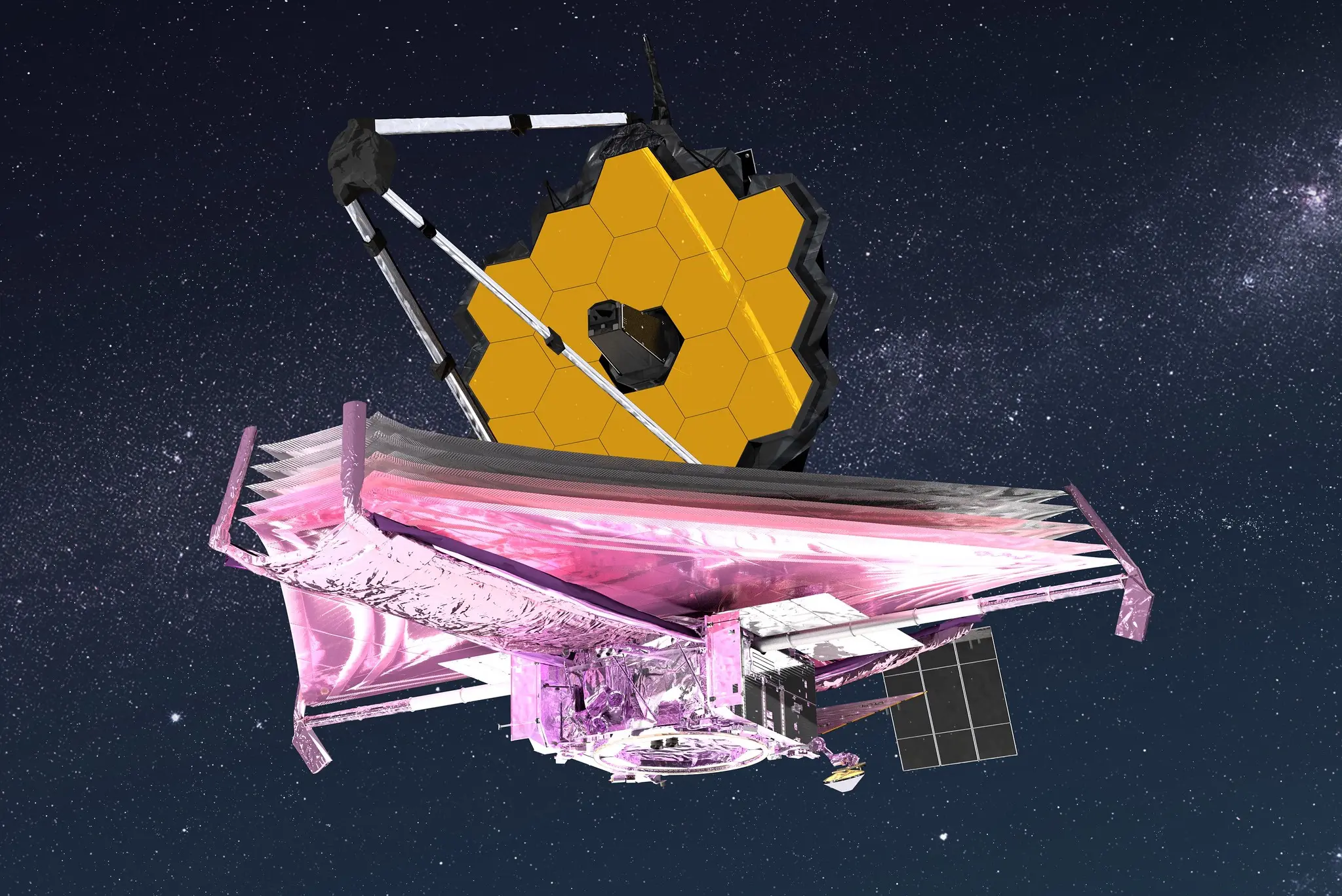James Webb Space Telescope


Technical Specifications |
|
|---|---|
| Instrument Name | Near-Infrared Imager and Slitless Spectrograph |
| Acronym | NIRISS |
| First Light | June 2022 |
| Wavelength Range | 0.6 - 5.0 microns (red and infrared) |
| Instrument Type | Imager and spectrograph |
| Status | Operational on the James Webb Space Telescope |
The James Webb Space Telescope (JWST) is considered the successor to the Hubble Space Telescope and represents a revolutionary advance in astronomy. As the most complex and powerful telescope ever built, the JWST has become the centrepiece of space-based observations for the next decade and beyond, serving a multitude of astronomers worldwide.
This monumental space observatory boasts an impressive array of features, including an enormous 6.5-meter primary mirror made up of 18 hexagonal panels, a mass of around 6,500 kg and a sunshield the size of a tennis court. The JWST’s complex engineering enabled it to be folded compactly to fit into the nose cone of the Ariane 5 rocket, and deployed in space in 14 days.
Located 1.5 million kilometers from Earth, the JWST operates in the cold, dark expanse of space, enabling the discovery and study of celestial objects thousands of times less luminous than previously observable. Distinct from the Hubble Space Telescope which operates at primarily optical wavelengths, the JWST is optimized for infrared observations.
The instrument comprises four separate components, including the Canadian-built FGS/NIRISS instrument, which combines the Fine Guidance Sensor (FGS) for precise guidance and the Near Infrared Imager and Slitless Spectrograph (NIRISS) for scientific observations. In particular, the FGS achieves an astonishing precision of one millionth of a degree in telescope guidance, equivalent to the width of a human hair at three kilometers.
Several researchers from the OMM’s Laboratory for Experimental Astrophysics (LAE) were involved in the design and construction of the Canadian FGS/NIRISS instrument on board the JWST. The OMM was added as a partner in the mission in the early 2000s, when current OMM Director René Doyon was recruited as Principal Investigator for the Canadian instrument. Many FGS/NIRISS components were built, assembled and tested in the Observatory’s laboratories. So it’s a small part of the OMM that orbits the Lagrange 2 point with the telescope!
The scientific objectives of the JWST are divided into four main themes: the exploration of extraterrestrial worlds, the study of galaxies throughout cosmic history, the observation of the life cycles of stars, from their birth to their death, and the exploration of the beginnings of the Universe, shortly after the Big Bang.
Thanks to its unique capabilities, the NIRISS instrument is ready to unveil the most distant galaxies in cosmic history, discover Jupiter-like exoplanets, and analyze the atmospheres of potentially habitable Earth-like planets for biosignatures such as water vapour, carbon dioxide, methane and oxygen.
This impressive project is the fruit of an international collaboration between NASA, the European Space Agency (ESA) and the Canadian Space Agency (CSA). Canadian astronomers have secured a share of the JWST observing time thanks to the contribution of the FGS/NIRISS instrument.
Researchers at the Mont-Mégantic Observatory and the Trottier Institute for Research on Exoplanets (iREx) continue to play a key role in the Webb mission, with OMM Director René Doyon serving as Principal Investigator of the Canadian Webb instrument. Canadian scientists are actively involved in various aspects of the Webb mission, including securing observing time, leading Canadian proposals for general observations and contributing to data analysis algorithms. Nathalie Ouellette, OMM Deputy Director, is the scientist in charge of science communication for JWST in Canada. Researchers Loïc Albert, Étienne Artigau and Neil Cook are the NIRISS instrument scientists in Canada. This OMM team at the Université de Montréal represents Canada’s scientific support team for JWST.